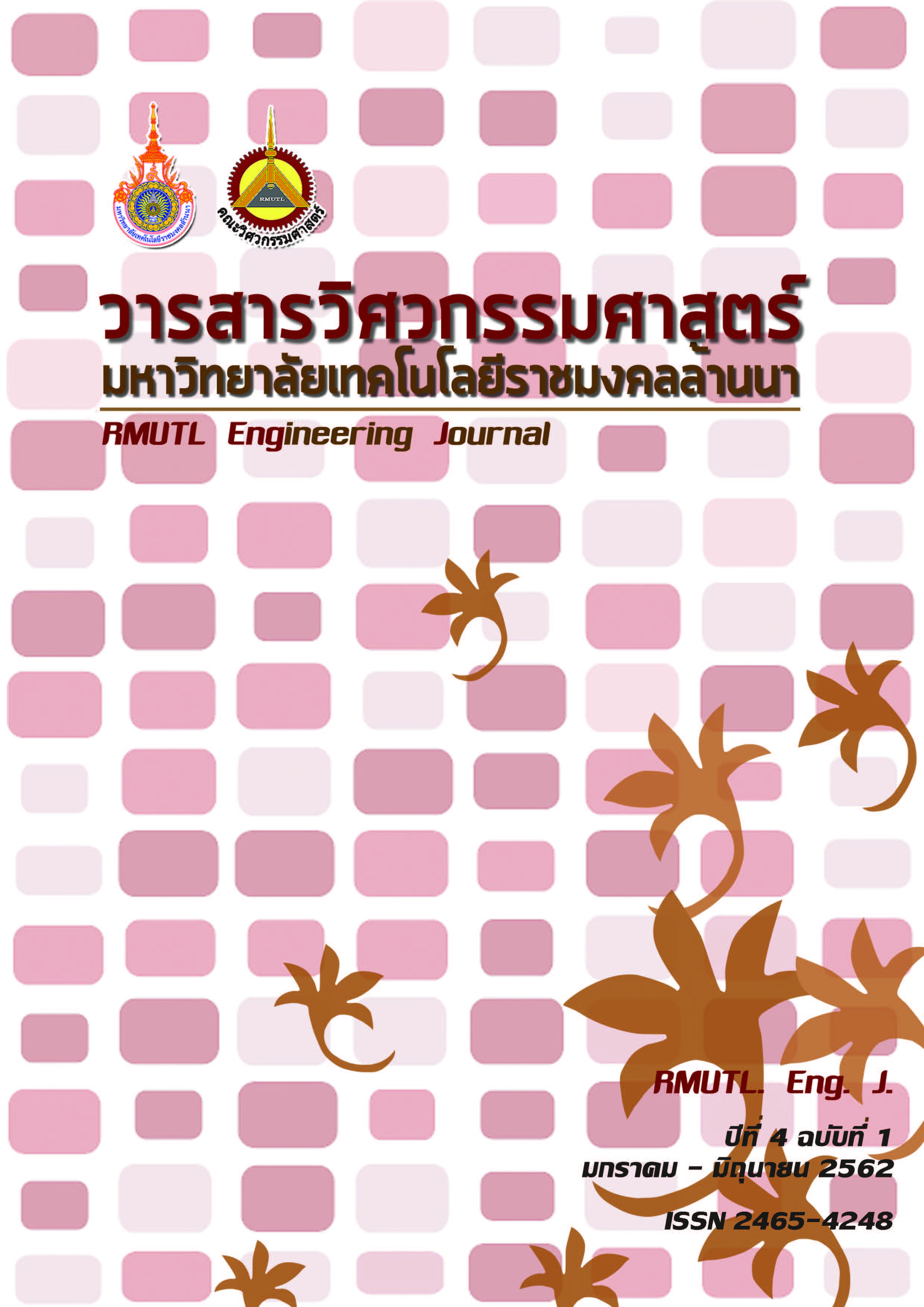Inhibition of the Growth of Ralstonia Solanacearum in Field Soil by Releasing Hot Water from Vertical Pipe
Keywords:
hot water pipe, hot water, soil surface, wilt, undergroundAbstract
The purpose of this research to inhibit the growth of Ralstonia solanacearum bacteria, which is the cause of Wilt in plant using the bacteria at 4.7 × 107 colony forming unit/g soil. The results showed that releasing hot water from 3-holes vertical pipe method could increase efficacy of heat releasing to the soil at the distance of 5 and 10 cm with 40 cm depth of soil. After 240 minutes of hot water releasing, Ralstonia solanacearum was completely inhibited.
References
[2] Al-Karaghouli AA, Al-Kayssi AW. Influence of soil moisture content on soil solarization efficiency. Renewable Energy. 2001;24:131-144.
[3] Scopa A, Candido V, Dumontet S, Pasquale V, Miccolis V. Repeated solarization and long-term effects on soil microbiological parameters and agronomic traits. Crop Protection. 2009;28:818-824.
[4] Tjamos EC, Antoniou P, Tjamos SE. Implementation of soil solarization in Greece: conclusions and suggestions. Crop Protection. 2000;19:843-846.
[5] Pulat E, Coskun S, Unlu K, Yamankaradeniz N. Experimental study of horizontal ground source heat pump performance for mild climate in Turkey. Energy. 2009;34:1284-1295.
[6] Koyun A, Demir H, Torun Z. Experimental study of heat transfer of buried finned pipe for ground source heat pump applications. International Communications in Heat and Mass Transfer. 2009;36:739-743.
[7] Gao P, Zhou G. Study on temperature field around heat pipe underground based on line heat source theory. Energy and Buildings. 2011;43:2483-2487.
[8] Scopa A, Candido V, Dumontet S, Miccolis V. Greenhouse solarization: effects on soil microbiological parameters and agronomic aspects. Scientia Horticulture. 2008;116:98-103.
[9] Phitthayarachasak T, Thepa S, Kongkiattikajorn J. Solar energy system reduces time taken to inhibit microbial growth in soil. Renewable Energy. 2009;34:2467-2473.
[10] Gay P, Piccarolo P, Aimonino D, Tortia C. A high efficiency steam soil disinfestation system, part I: Physical background and steam supply optimization. Biosystems engineering. 2010;107:74-85.
[11] Gay P, Piccarolo P, Aimonino D, Tortia C. A high efficacy steam soil disinfestations system, part II: Design and testing. Biosystems engineering. 2010;107:194-201.
[12] Suttisong S, Rattanadecho P. The experimental investigation of heat transport and water infiltration in granular packed bed due to supplied hot water from the top: Influence of supplied water flux, particle sizes and supplied water temperature. Experimental Thermal and Fluid Science. 2011;35:1530-1534.
[13] Sun L, Song S, Fu L, Deng X, Wang D, Liang X, Li R, Shen Q. Exploring a soil fumigation strategy based on ammonium bicarbonate to control Fusarium wilts of cucurbits. Crop Protection. 2015;70:53-60.
[14] Zanón MJ, Font MI, Jordá C. Use of tomato crop residues into soil for control of bacterial wilt caused by Ralstonia solanacearum. 2011;30:1138-1143.










